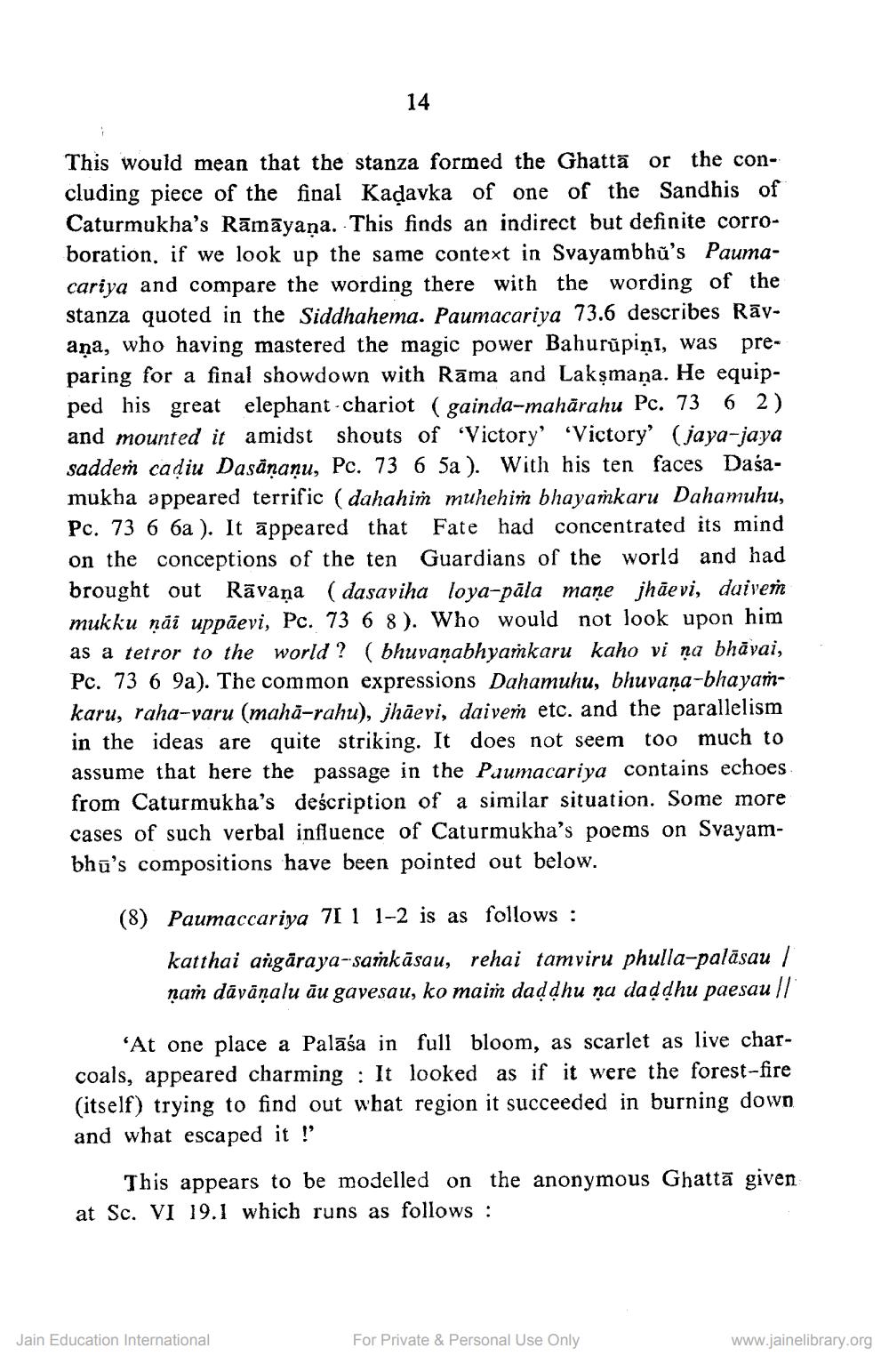________________
F
14
This would mean that the stanza formed the Ghatta or the concluding piece of the final Kaḍavka of one of the Sandhis of Caturmukha's Rāmāyaṇa. This finds an indirect but definite corroboration, if we look up the same context in Svayambhu's Paumacariya and compare the wording there with the wording of the stanza quoted in the Siddhahema. Paumacariya 73.6 describes Ravana, who having mastered the magic power Bahurupiņi, was preparing for a final showdown with Rama and Lakṣmaṇa. He equipped his great elephant chariot (gainda-mahārahu Pc. 73 62) and mounted it amidst shouts of 'Victory' 'Victory' (jaya-jaya saddem cadiu Dasāṇaņu, Pc. 73 6 5a). With his ten faces Dasamukha appeared terrific (dahahim muhehim bhayamkaru Dahamuhu, Pc. 73 6 6a). It appeared that Fate had concentrated its mind on the conceptions of the ten Guardians of the world and had brought out Ravana (dasaviha loya-pāla mane jhäevi, daiveṁ mukku näi uppäevi, Pc. 73 6 8). Who would not look upon him as a tetror to the world? (bhuvanabhyamkaru kaho vi na bhāvai, Pc. 73 6 9a). The common expressions Dahamuhu, bhuvaṇa-bhayaṁkaru, raha-varu (maha-rahu), jhäevi, daivem etc. and the parallelism in the ideas are quite striking. It does not seem too much to assume that here the passage in the Paumacariya contains echoes. from Caturmukha's description of a similar situation. Some more cases of such verbal influence of Caturmukha's poems on Svayambhu's compositions have been pointed out below.
(8) Paumaccariya 71 1 1-2 is as follows:
katthai angāraya-saṁkāsau, rehai tamviru phulla-palāsau | nam dāvāṇalu au gavesau, ko maim daḍdhu na daddhu paesau ||
'At one place a Palaśa in full bloom, as scarlet as live charcoals, appeared charming : It looked as if it were the forest-fire (itself) trying to find out what region it succeeded in burning down and what escaped it !'
This appears to be modelled on the anonymous Ghatta given at Sc. VI 19.1 which runs as follows :
Jain Education International
For Private & Personal Use Only
www.jainelibrary.org




